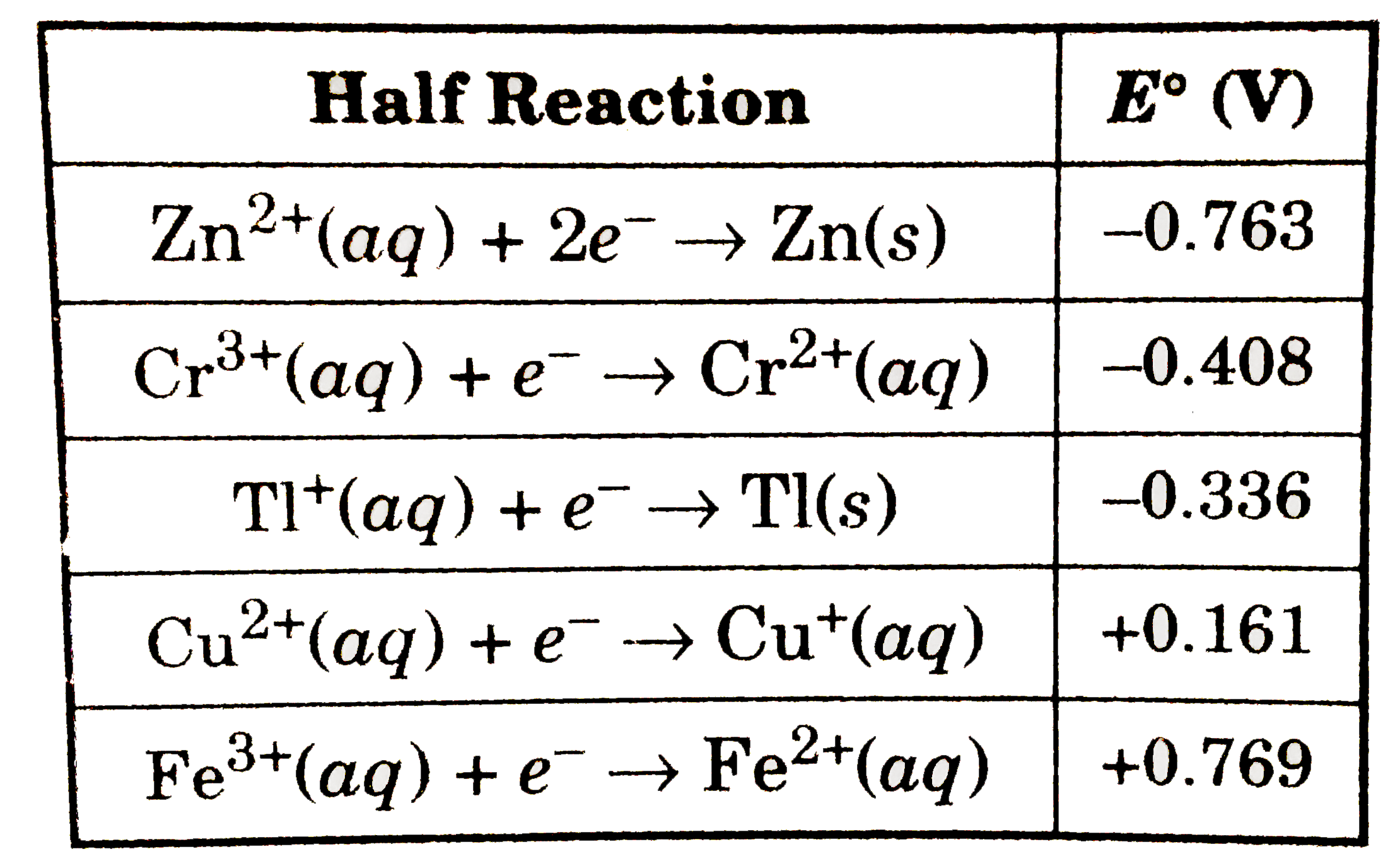The reaction Zn2++2e–→Zn(s) has a standard potential of –0.76V. This means:
Zn can't replace hydrogen from acids
Zn is a reducing agent
Zn is an oxidising agent
Zn2+ ions are a reducing agent
The correct Answer is:B
Similar Questions
Knowledge Check
The reaction: Zn2+(aq)+2e−→Zn(s) has a electrode potential of -0.76 V. This means-
AZn cannot replace hydrogen from acidsBZn is reducing agentCZn is oxidising agentDZn2+ is a oxidizing agentThe reaction: Zn2+(aq)+2e−→Zn(s) has a electrode potential of -0.76 V. This means-
AZn can't replace hydrogen from acidsBZn is a reducing agentCZn is an oxidising agentDZn2+ is a reducing agentThe reaction M2+2e−→M has standard potential of −0.66V . This means
AM cannot replace hydrogen from acidBM is a reducing agentCBoth are equally strongDThe cell between M and H2 is not possible
The electrode potential, E∘, for the reduction of MnO−4 to Mn2+ in acidic medium is +1.51V. Which of the following metal(s) will be oxidised? The reduction reactions and standard electrode potentials for Zn2+,Ag+andAu+ are given as
Zn2+(aq)+2e−→Zn(s),E∘=−0.762V
Ag+(aq)+e−⇔Ag(x),E∘=+0.80V
Au+(aq)+e−⇔Au(s),E∘=+1.69V
View SolutionStandard reduction electrode potential of Zn2+/Zn is -0.76V. This means:
View SolutionFor a reaction Zn+2+2e−→Zn,E∘=−0.76V which of the following statement is true? (E = Electrode potential)
View SolutionCalculate the half cell potential at 298K for the reaction, Zn+2+2e−→Zn if [Zn+2]=2M,E∘Zn+2/Zn=−0.76V
View Solution
Use the standard reduction potentials to find the standard cell potential E∘, for the reaction:
Zn(s)+2Tl+(aq)→Zn2+(aq)+2Tl(s)
View Solution
